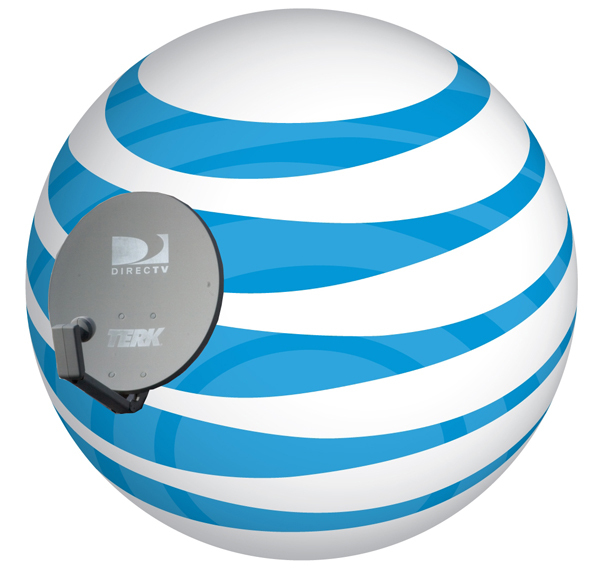6 Things Consumers Can Expect If AT&T and DirecTV Merge

2014 is apparently the year of the TV merger. Over the weekend AT&T and DirecTV announced their plans to join in corporate marriage. So if a phone giant buys a satellite giant, what’s the end result for consumers?
They’ve broken down some of the basics over at Bloomberg. AT&T and DirecTV together would bring TV and broadband access to about 26 million consumers — not that far behind Comcast/TWC’s projected 30 million. Here’s what Bloomberg says those 26 million subscribers can expect.
1. Increased prices. AT&T has promised not to raise rates for three years, Bloomberg says, but after that all bets would be off. Since all cable rates are increasing four times faster than inflation, it’s a good bet that as soon as the window ends, so does the price freeze.
2. More AT&T broadband access. AT&T has said that they would use money either generated or saved by the merger to add another 15 million broadband subscribers to their portfolio, particularly in rural areas. (Increasing internet access in rural and low-income areas is a favorite promise of cable and telecom companies when they want regulator approval for something.)
3. Net neutrality — for now. Although the net neutrality rule is in a state of flux right now, AT&T has said they will abide by the now-vacated 2010 version for three years as part of the merger. How that would fare in the face of changes in regulation from the FCC — which, one way or another, there will be — remains to be seen.
4. More content. Bloomberg says that with more buying power, AT&T/DirecTV could access “better” content, but that’s not necessarily true. They would, however, have the power to negotiate lower prices (to them) for additional channels and other forms of content delivery, like on-demand packages.
5. The status quo of bundled content. Bloomberg points out that the merged company would have little to no incentive to consider a la carte programming offerings. But that’s no change — pretty much all of pay TV currently works on a system of contracts for bundled sets of networks.
6. Higher high-def content. The merged company would have more money to spend on upgrading their look, says Bloomberg, and that means “Ultra HD” content. Which is great in theory, but 4K tech is still very new and very, very expensive. It will be many years yet before most consumers have a screen that can play back media at that high a resolution.
What AT&T-DirecTV May Mean for 26 Million U.S. Customers [Bloomberg]
Want more consumer news? Visit our parent organization, Consumer Reports, for the latest on scams, recalls, and other consumer issues.

